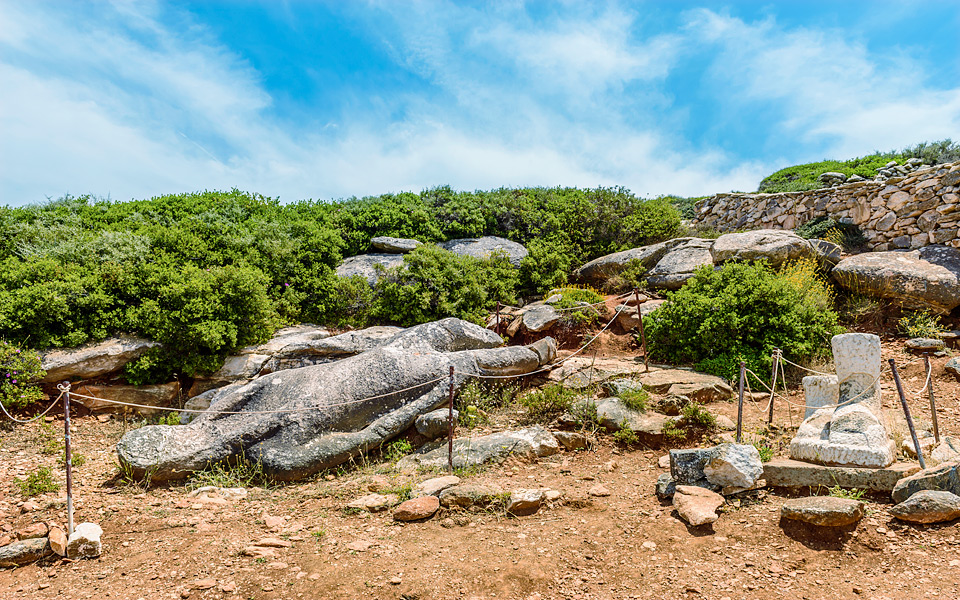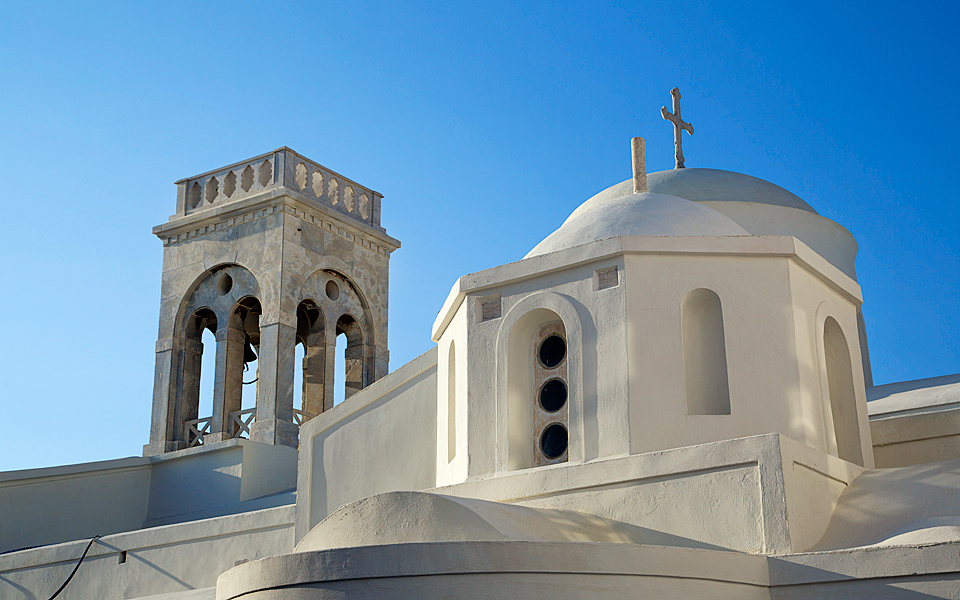No matter how long you stay on Naxos, it is never enough. Getting a full grasp of what the island has to offer from just one visit is not easy. You, simply mentally store the things you learned about the island, retain images of its vast beaches and marble antiquities, cling on to the unique local flavors, and hope to make a swift return for more.

MAIN ATTRACTIONS
Following my visit to this, the largest, island, of the Cyclades, I will never forget the enormous Kouros dating back to 570 BC in the Flerio area, a 5.5-meter grayish statue lying beneath the trees in eternal slumber. The statue is believed to have been commissioned by an aristocrat of the era but ended up being left in the forest after getting damaged while being transferred.
Apiranthos, a fantastic yet peculiar village, is another lasting memory of mine. It is situated at the foot of the Fanari Mountain, which seems to alternate between being rugged and accessible. A local dialect considered to contain both ancient Greek and Byzantine elements has survived in Apiranthos. The Agia Kyriaki church, located slightly beyond the village, is renowned for its murals.




As for other features on the island, the Archaeological Museum offers visitors the opportunity to view a series of figurines, sculpted as both standing and seated creations. They are broad shouldered, have bent legs, and clutch their stomachs, as if in pain. Their heads are inclined upwards, they are eyeless, and the nose is the only distinguishable facial feature. Knowledge of art history is not necessary to discern that these Proto-Cycladic human models on display at the museum depict the beginnings of minimalism. Other highlights of the museum’s collection include vases from the Mycenaean and Geometric periods, as well as the museum building itself, large and imposing, and colored a delightful ripe peach color. It is a historic five-level mansion located in the main town’s Castle (Kastro) area and once served as the School of Commerce, where the famed writer and philosopher Nikos Kazantzakis had studied for a year.

ARCHAEOLOGICAL SITES
The Gyroula archaeological site, close to the village Sangri, is another important Naxos landmark. A sanctuary where deities of fertility were worshipped, especially the goddess Demeter, is located here. A two-aisled Ionic temple constructed in the area in 530 BC, during the tyranny of Lygdamis, represents a precursor of classical Athenian architecture. Oil and wine production facilities, as well as pottery workshops, existed around the temple. The ancient Greek temple went through many stages. It was initially Christianized, while, during the period of Byzantine emperor Justinian, from 527 to 565AD, a three-aisled basilica incorporating parts of the old temple was established.
This specific archaeological site is truly impressive as the temple’s method of restoration has succeeded in fully capturing its character. The marble pieces have been repositioned to their original places. This spot also offers a view of the surrounding valley, a serene and unadulterated location that clearly demonstrates why deities of fertility and productivity were once worshipped here. It is one of the few archaeological sites I have visited that truly made me feel like I had traveled back in time and space. The year 530 BC feels near here.
Besides the Gyroula archaeological site, Portara, the entrance to the Temple of Apollo, a 6th century BC unfinished construction on the islet of Palatia at the port’s entry, is the island’s other most distinctive archaeological site that survives today. The Temple of Apollo may have remained incomplete but its Portara entrance still stands today and has become a trademark of the island.

LOCAL PRODUCTS
Temples aside, Naxos is blessed with rich agricultural activity. We were invited for lunch at a small cheese producing facility close to Sangri. The cheese producer’s equipment was set up at one end of the room, while the rest of the space was taken up by an enormous table set with salads, meat, pies, olives, and, of course, cheese. Outside in the yard, fries, made from renowned Naxos potatoes, were being prepared at the makeshift kitchen so we could enjoy them fresh. Just beyond, a small lamb with thin and feeble legs wandered about with a behavior resembling that of a toddler. It seemed shy but was actually seeking attention, to be caressed and fed. A truly blissful moment it was.

© Clairy Moustafellou

The trip to Naxos also acquainted us with the renowned local Kitron. In Halki, we visited the Vallindras Distillery, launched around 1870 by founder Grigoris Vallindras, who began producing Kitroraki, a citrus-based Raki (potent spirit). Later on, in the late 19th century, the founder’s son introduced Kitron, a new liqueur distilled from grape skins and citron tree leaves, nowadays a trademark local product. Now five generations old, the distillery continues to produce the liqueur, in three varieties, with the alcohol content ranging from 30 to 36 percent.

BEACHES CATERING TO ALL TASTES
Naxos has plenty to offer in terms of beaches as the island’s extensive size ensures considerable variety.
Agios Prokopios is renowned for its long stretch of beach, big crowds, and various tourism industry distinctions.
Agia Anna, which has developed into one of the island’s most cosmopolitan beaches, is organized and features beach bars.
Plaka beach, also a very well known spot, is a major draw for water sport enthusiasts.
Mikri Vigla attracts surfers (wind surfing and kite surfing), as does Agios Georgios beach, lose to Hora, the main town.
Agiassos, featuring shallow waters, is a particularly impressive beach. So, too, is Alyko.
Also worth considering are Glyfada, Kastraki, Apollonas, Kalantos, the tiny pebble-covered cove of Abram and the small windy bay of Moutsouna,
Windless Panormos offers a terrific view of the neighboring Koufonissia islands, from a point reached by a track starting at the beach. Another option is Psili Ammos, located in front of a cedar forest while serene Lionas ensures total relaxation on the beach’s white-colored pebbles.
Quite impressively, these beaches represent only a fraction of the island’s entire offering.

WATER SPORTS
Besides lazy days spent on the island’s beaches, Naxos, in the summer, also offers a more active side for those seeking adrenaline rushes. The island’s wind conditions are well suited for avid kite surfers, as well as wind surfers.
Mikri Vigla is a great spot for both these water sports. Plenty of action can also be expected at Ai-Giorgis and Plaka, where water skiing and other recreational options are on offer.
If interested in scuba diving to explore the island’s rich underwater world – including caves, shipwrecks, such as the Marianna merchant vessel that sunk in the area in 1981, even downed aircraft, such as the World War II fighter jet Beaufighter – then definitely look up the island’s diving centers. These include www.naxosdiving.com and www.bluefindivers.gr (which we found surfing the net). Other options include seaside horse riding and sailing.












